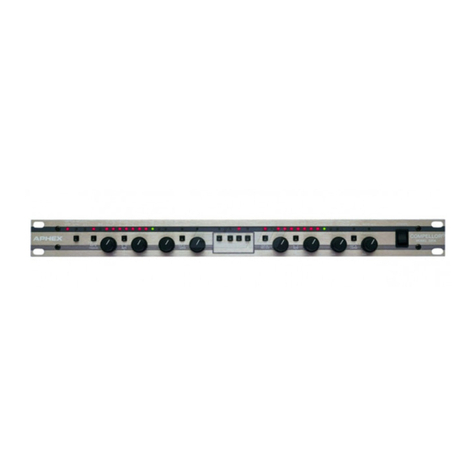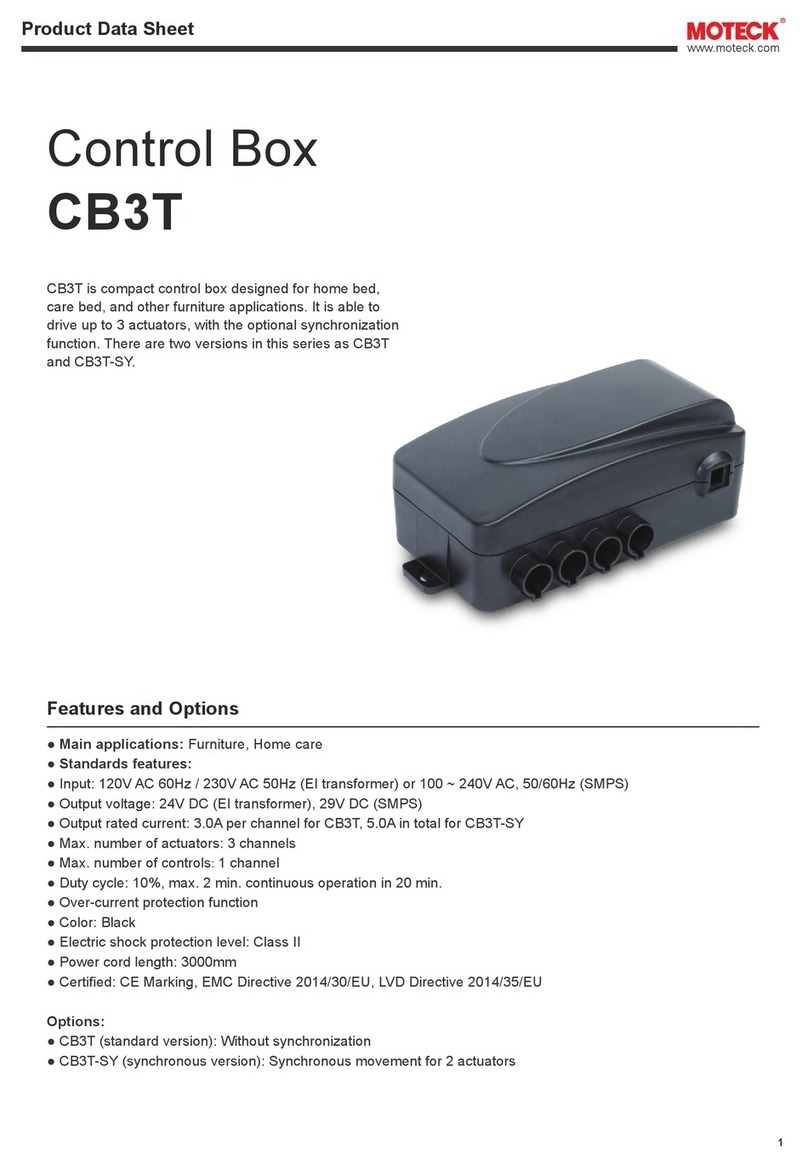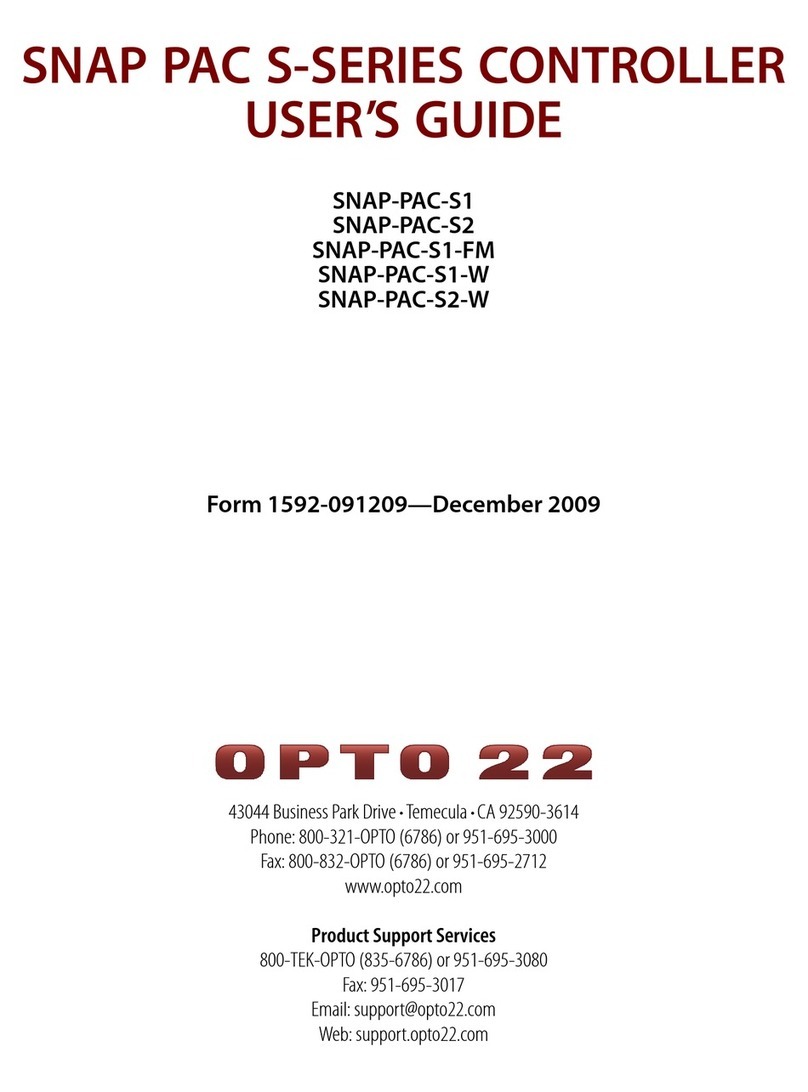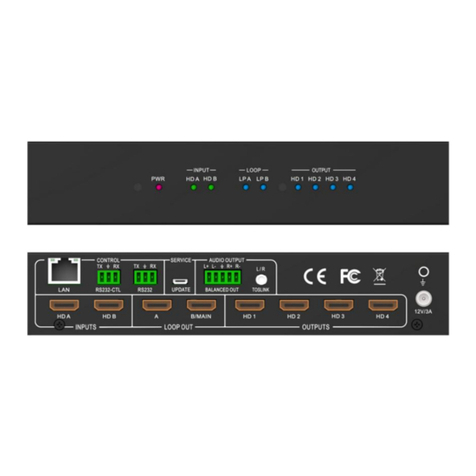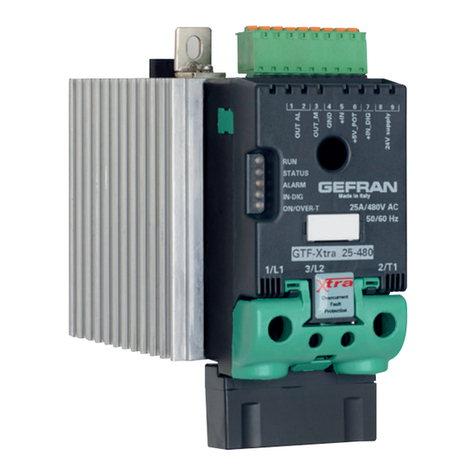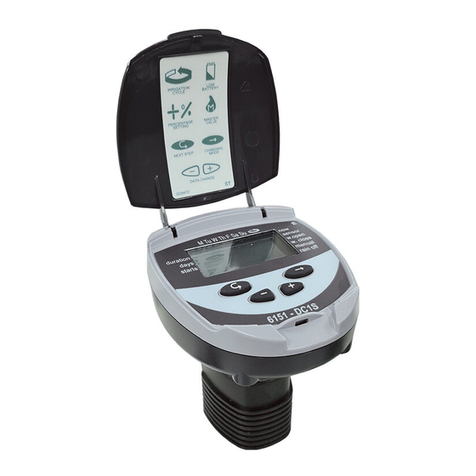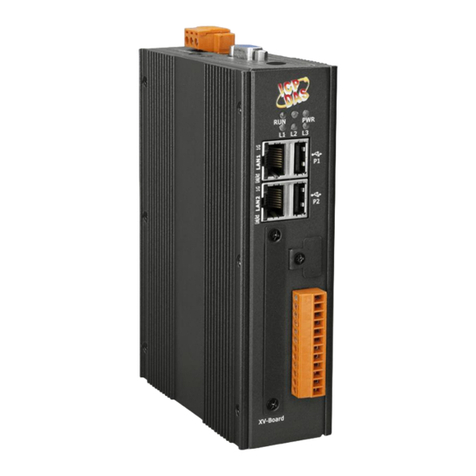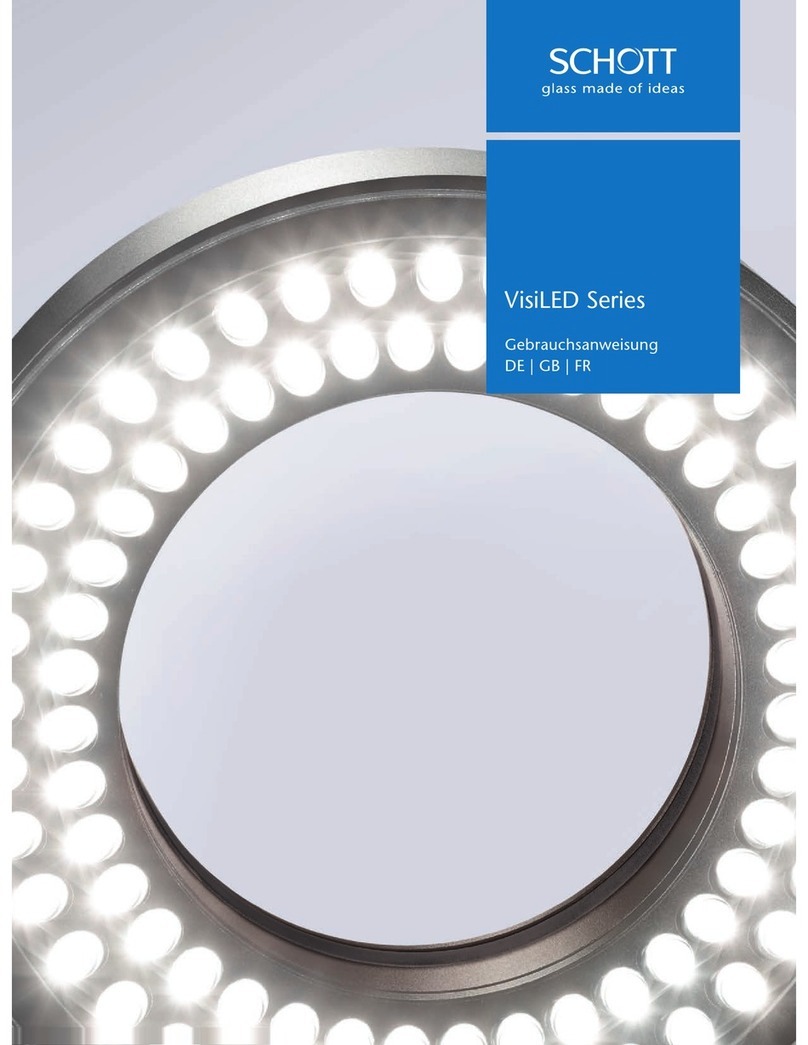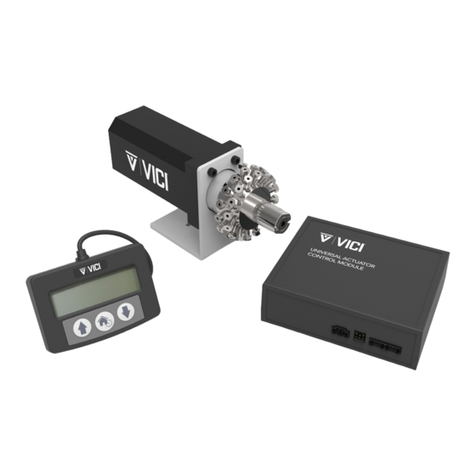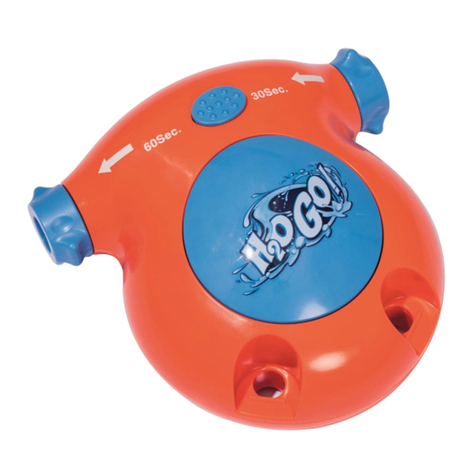Ferrovac LSA3.1 User manual

Operating Instructions
LSA3.1
Page| 2/19
Important!
It is the sole responsibility of all users to carefully read the operating instructions and to
keep them safe. Read and follow all safety instructions carefully before using the product
described in this document. Ferrovac AG declines any and all responsibility and liability for
any damage/injuries resulting from the use of incorrect adjusting of the product.
Warranty
Ferrovac AG warrants this product to be free of defects in material and workmanship for a period of
24 months from the date of shipment. In case of proof of any defective parts in the product, we will
at our option, either repair the product or replace it.
Warranty limitations
The warranty for this product does not apply to defects resulting from the following:
• Non-observance of operational- and safety instructions
• Natural wear of components
• Consumables
• Modifications to our products without our written consent
• Misuse of any product or part of the product
This warranty stands in place of all other warranties, implied or expressed, including any implied
warranty of implied merchantability or fitness for a particular use. The remedies provided herein are
buyer’s sole and exclusive remedies.
Neither the company Ferrovac AG nor any of its employees shall be liable for any direct, indirect,
incidental, consequential or special damages arising out of the use of its products, even if the
company Ferrovac AG has been advised in advance of the possibility of such damages. Such excluded
damages shall include but are not limited to: Costs of removal and installation, losses sustained as
the result of injury to any person, or damage to property.
Copyright
Copyright 2019, Ferrovac AG. All rights reserved. All information in this document is the sole property
of Ferrovac AG and is protected by Swiss copyright laws and international conventions. Ferrovac AG
grants the right for reproduction for the purchasers own use. No part of this manual may be
reproduced or transmitted by any third party in any form or by any means and for any purpose
without the written permission of Ferrovac AG.

Operating Instructions
LSA3.1
Page| 3/19
1 General Information........................................................................................................................4
1.1 Designated Use........................................................................................................................4
2 Terms and Symbols ......................................................................................................................... 5
3 General Safety Information.............................................................................................................5
4 About...............................................................................................................................................7
4.1 Dimensions..............................................................................................................................7
4.2 Panel Description and Connections.........................................................................................8
4.3 Specifications...........................................................................................................................9
5 Unpacking and Inspection ............................................................................................................10
5.1 Installation.............................................................................................................................10
5.2 Controller Power Management.............................................................................................10
5.3 Connecting the Ion Pump......................................................................................................10
5.4 Connecting the Temperature Cable ...................................................................................... 10
6 Operation...................................................................................................................................... 11
6.1 Start-up..................................................................................................................................11
6.2 Charging the Battery...............................................................................................................11
6.3 Shut-down..............................................................................................................................11
7 Display Functionality..................................................................................................................... 11
7.1 Normal Mode ........................................................................................................................ 11
7.2 Alarms....................................................................................................................................12
7.3 Display Light...........................................................................................................................12
8 Transport and Packing...................................................................................................................12
9 Storage and Disposal.....................................................................................................................12
10 Digital Interface and Programming ............................................................................................... 13
10.1 Read Data..............................................................................................................................13
10.2 LSA ON...................................................................................................................................13
10.3 LSA OFF..................................................................................................................................13
10.4 Software................................................................................................................................14
11 Maintenance ................................................................................................................................. 15
12 Performance Data .........................................................................................................................16
12.1 Battery Charge Time .............................................................................................................16
12.2 Battery Discharge Time ......................................................................................................... 16
12.3 Load Curve.............................................................................................................................16

Operating Instructions
LSA3.1
Page| 4/19
12.4 Current-Pressure Relationship...............................................................................................17
13 Additional Information..................................................................................................................18
13.1 Repair and Return of Defective Items ................................................................................... 18
13.2 Downloads.............................................................................................................................18
13.3 CE Conformity Sheet..............................................................................................................19
1 General Information
This manual covers all important information about installation, commissioning and operation of
your LSA Battery Operated High Voltage Controller for UHV Suitcases and Ion Getter Pumps. It also
provides important safety information, maintenance- and fault finding procedures.
The product described was manufactured in accordance with the applicable national standards and
guidelines. The information in this document represents the state of the product at the date of print.
Technical changes may be made without notice. Ferrovac AG makes no warranties or representations
with respect to accuracy or completeness of the contents of this publication. Figures and photos are
not binding. The product names used are for identification purposes and may be trademarks of their
respective companies.
1.1 Designated Use
The product described in this document may only be used for its designated application. Designated
use of the product is exclusively given if the following rules are obeyed:
Product is used with original parts supplied by Ferrovac which are explicitly specified for the
use with the product described in this publication
In an indoor research laboratory environment or an industrial production or processing
facility
Witch all cabling connected and secured, if applicable
By personnel qualified for operation of delicate scientific equipment
In accordance with all related manuals.
Important!
Carefully read all safety instructions and all relevant manuals before using the product and
any related equipment!
Non-designated use is given if the following is true:
Product is used with other equipment not explicitly acknowledged by Ferrovac in writing
Product is used outdoors or at ambient conditions exceeding the values given in the product
specification
Product is used by non-qualified persons
Operation of the product in disregard of the safety instructions
Operation of the product with disabled, modified, removed or damaged safety equipment
and devices.

Operating Instructions
LSA3.1
Page| 5/19
2 Terms and Symbols
Symbol
Term
Meaning
Danger!
Risk of mortal danger when
not observed
Warning!
Risk of severe injury or danger
to life when not observed
Caution!
Slight risk of injury or damage
to product when not observed
High voltage!
Potentially lethal voltages are
present
Cryogenic Substances!
Potential cold burn hazard if
safety precautions are not
followed
Important!
Important information for
proper operation of the
product
Info, hint!
Useful hints, tips and clues
3 General Safety Information
Read the safety instructions very carefully. All safety precautions must be strictly observed at all
times before using the product described in this manual and any associated instrumentation.
Study this document to learn how to operate your product properly. Keep this instruction manual in
a save place close to the described product and inform all other users of the product. Always include
this manual when handing the product over to third party persons.
Responsible body is the individual or group of persons that are responsible for the proper use and
maintenance of the product, ensuring that the product is operated within its specifications and
operating limits. The responsible body must ensure that users of the product are adequately trained.
Operators are using the product for its intended purpose. Users must be trained in electrical safety,
handling of cryogenic liquids and adequate use of the instrument. They must be protected from
electric shock and contact with potentially dangerous situations.
Maintenance Personnel perform routine tasks on the product to keep it in proper operating
conditions i.e. setting up the line voltage or replacing consumables. Maintenance procedures are
described in this manual and must be followed at all times.

Operating Instructions
LSA3.1
Page| 6/19
Service Personnel are trained to work on live circuits and to work cryogenic liquids as well as
perform fault finding measurements and repair work to the product. Only fully trained service
personnel qualified to handle potentially lethal voltages may perform servicing and repair.
Shock hazard: The American National Standards Institute states that a shock hazard exists when
voltage levels are greater than 30 V RMS, 42.2 V peak or 60 VDC. A good safety practice is to assume
that hazardous voltages are present in any unknown circuitry.
Warning!
Any adjustment, fault finding procedure, installation and maintenance of the products described
in this manual must be carried out only by authorized personnel, fully qualified to handle
potentially lethal voltages.
Warning: High Voltages up to 5kV!
Always observe and strictly follow the safety notes and regulations given in this
document.
Always use the configured cables delivered with the product for electrical connections.
Never operate the high voltage supply when the ion pump is not connected and under
vacuum.
Never operate the ion pump in a pressure range above 1E-5 mbar.
Never operate the device outside its dedicated environment.
Always strictly follow the safety notes and regulations.
DO NOT OPEN the device unless you fulfill the requirements of a fully trained service
personnel and you are familiar with ultra-high vacuum products.
Important! Ambient conditions and environment:
This product is only to be used indoors, in locations meeting the following requirements:
Room temperature lies between 5 °C/41 °F and 40 °C/104 °F
Humidity up to maximum of 80 %
Altitudes up to 2000 m
Pollution Degree 2 environments

Operating Instructions
LSA3.1
Page| 7/19
4 About
The LSA is a battery powered ion pump controller which allows an operation of an ion pump without
mains power supply for many hours. This unit is in particular suitable for mobile ultra high vacuum
chambers which can be connected to different systems in a laboratory. The LSA is designated to
operate ion pumps which fulfill the respective requirements for a supply voltage of 5 kV and a
maximum current of 100 μA. The device is powered by a Nickel metal hydride (Ni-MH) rechargeable
battery such that the controller can independently run up to 40 h. The battery is charged by an
external power supply. The LSA measures the current of the ion pump and displays the pressure. It is
optimized for a NEXTorr® D100-5 or NEXTorr® D200-5 pump from SAES unless you clearly define
these other pumps. The LSA is designed to operate diode ion pumps which require positive output
polarity.
Caution!
Please note that the polarity has to be correct for your pump!
4.1 Dimensions
(All dimensions in mm)

Operating Instructions
LSA3.1
Page| 8/19
4.2 Panel Description and Connections
1. Display
2. Status LED (blue) indicating power availability
3. Alarm LED (red) indicating an alarm for low battery or temperature readout above 150 °C
4. Power Output ON Switch
5. Power Output OFF Switch
6. External Power Supply Connector
7. Charging Power LED
8. High Voltage Output Connector (HUBER&SUHNER SHV type) to Ion Pump
9. Temperature Sensor Input Connector (4 pole)

Operating Instructions
LSA3.1
Page| 9/19
4.3 Specifications
Ambient Conditions:
oTemperature: 5 °C to 40 °C
oRelative Humidity: maximum 80% for temperatures up to 31 °C,
decreasing linearly to 5% relative humidity at 40 °C
oAltitude: up to 2000 m
Charging Device:
oInput: 100 – 240 VAC, 50/60 Hz
oMains Voltage fluctuation: ±10 % max.
oOutput: +12 VDC (±5 %)
Input (Battery Charge):
oVoltage: +12 VDC (±5 %)
Battery:
oType: Ni-MH (Nickel metal hydride)
oDischarge Time: approx. 40 h at 5 µA load current
oCharging Time: approx. 8 hours
oBattery Life Span: approx. 1000 cycles
Output:
oHigh Voltage Output: +5 kV DC (±10 %)
oCurrent: 100 µA max.
oSource Resistance: >10 MΩ
oOutput Connector: Kings HV connector, max. 10 kV DC
Pump Capacity: Diode ion pumps with a load current <100 µA.
Please refer to the current to pressure diagram of the
pump manufacturer.
Temperature Measurement:
oSensor Type: Pt100
oSupply Current: 1 mA
oTemperature Range: -200 °C to 150 °C, ±2.5 °C

Operating Instructions
LSA3.1
Page| 10 /19
5 Unpacking and Inspection
Before unpacking, optically inspect the parcel. If damage is found, take pictures of the parcel and send
them to Ferrovac AG immediately. Compare content with the order list. The package should contain
following products, but may vary upon specific customer requests:
1. Battery powered ion pump controller
2. Battery charger including 4 power adapters
3. This manual and any manuals of additional subunits, if applicable.
Any damage or missing item must be reported to Ferrovac within 48 hours after arrival of the items.
5.1 Installation
Put the LSA on a solid table, such that it cannot fall down. When connecting any cables, ensure that
they cannot become a tripping hazard for people working nearby or that anybody could tear down
the LSA controller.
The battery charger:
• The LSA must be charged using the delivered 12VDC ±5 % poweradapter
• Use the correct mains adapter plug for your country and install it on the power adapter
• Connect the LSA unit to a mains socket (not exceeding voltage fluctuations of ±10 %)
• Connect the cable of the 12 VDC power adapter to the LSA power input. The red LED in the
front panel lights up when the power adapter is connected.
5.2 Controller Power Management
Before using the Ion Pump controller for the first time, the internal battery must be charged for
approximately 5 h. The fully charged controller will run up to 60 h on internal battery supply. The
lifespan of the batteries, with correct charging and discharging, is approximately 1000 charge cycles.
5.3 Connecting the Ion Pump
Caution!
Only connect or disconnect HV cables when the LSA controller is switched off. Only use an
original cable rated for at least 5 kV DC supplied with the LSA unit.
Make sure that the LSA is switched off. Connect the pump to the “HVout” output connector using the
originally supplied high voltage cable with the correct HV coaxial connector. The cable must be fully
intact (refer to the maintenance section).
5.4 Connecting the Temperature Cable
The cable for temperature measurement is connected to the 4 pole output connector called ”Temp”.
When no temperature cable is connected, the display will show “noTemp”.

Operating Instructions
LSA3.1
Page| 11 /19
6 Operation
Important!
Ferrovac AG declines any and all responsibility and liability for any damage resulting from
incorrect use or incorrect adjustment of the product.
6.1 Start-up
For starting the controller, press and hold the controller power ON switch for 5 seconds. At the same
time the blue status LED will light up.
NOTE: The LSA controller output is short circuit proofed. Current overload >100 µA will result in an
approximately linear decrease of the output voltage (see also performance data in section 12
Performance Data).
NOTE: At start-up of a pump, it might take some time until the pump reaches its normal working
condition. Therefore the current drops usually during the first minutes from a high value. Please refer
to the respective manual of the pump.
6.2 Charging the Battery
The charger for the battery can be connected whenever it is needed. It is not necessary to switch off
the LSA. When the battery has come to its minimum level, the LSA will switch off automatically. This
automatically prevents an absolute discharge of the battery. It takes about 8 hours without a pump
connected to fully recharge the LSA.
6.3 Shut-down
For shutting down the controller, press and hold the power OFF switch for 5 seconds. The high
voltage at the output connector will decrease to zero level after approximately 1 minute, depending
on the load current.
7 Display Functionality
7.1 Normal Mode
At start-up, the display shows a starting message. Afterwards, it will automatically switch to the
normal mode showing the pressure in mbar, battery state and temperature (if applicable) in °C. The
battery indicator has three bars (Bat: □□□) to show the battery status. When the battery
discharges, the boxes will vanish until (Bat: _ _ _) is shown. When the battery is fully charged, the
three bars in the display will become black (Bat: ■■■). Then the power adapter can be taken off.
When the battery starts discharging, the bars will be open again. If the pressure is too low and cannot
be measured properly anymore, the display will show ”P UNDERRANGE”. This also happens if no ion
pump is connected with the controller.

Operating Instructions
LSA3.1
Page| 12 /19
7.2 Alarms
When the controller detects a low battery voltage it beep for about 1 minute, and the display will
show ”Bat low”. Battery power is maintained for about another 2h. The red alarm LED will blink until
the batteries are charged again or the LSA is switched off. When the battery has come to its minimum
level, the LSA will switch off automatically.
Display
Meaning
Bat: ■■■
Battery fully charged
Bat: □□□
Bat: □□_
Bat: □_ _
Battery discharging
Bat: ___
Battery has 8-10 hours left
Bat low
Together with beeping: The battery should be charged soon again, about
2 hrs remaining before the LSA will automatically switch off
noTemp
No temperature sensor connected
T= 155°C
Temperature display
P UNDERRANGE
Pressure is too low to be measured
P OVERLOAD !
Detected pressure is too high, device in overload
In case of a temperature above 150°C the LSA will beep for about 1 minute and the red alarm LED will
blink. Once the temperature drops below 150°C again or the temperature sensor cable is
disconnected, the alarm stops automatically.
7.3 Display Light
At start-up, the display background light is illuminated and will switch off after about 10 seconds to
save battery power. The display background light can be switched on again by quickly pressing the “ON”
button. It switch off after 10 seconds again. It also can be manually switched off by pressing the “ON”
button a second time.
8 Transport and Packing
During transport outside a laboratory environment for longer distances, the device must be switched
off. The LSA must be carried by hand or in an appropriate package. The operator needs to make sure
that the LSA cannot be switched on unintentionally. The inner contact of the HV connector must
always be protected against accidental contact. The device must be protected from mechanical shocks.
9 Storage and Disposal
Before removing the HV cables, the LSA must be switched off. The device must be stored in a safe
place where it cannot fall or be switched on unintentionally (accidentally pressing the ON button
must be prevented). The cables can be gently coiled without making any kinks. In order to maintain
the lifespan of the batteries, it is advisable not to fully discharge the batteries during storage.
All electronic equpment must be disposed properly into electronic waste to be recycled at safely
managed sites according to the local laws.

Operating Instructions
LSA3.1
Page| 13 /19
10 Digital Interface and Programming
The LSA has a USB port allowing digital interferacing. Principle aspects of this interface are:
Baud Rate (19200)
Data Bits (8)
Parity (None)
Stop Bit (1)
1. Vcc (+5V)
2. Data -
3. Data +
4. NC
5. GND
In order to communicate with the LSA unit, plug in your board and wait for Windows to begin its
driver installation process. If the installer does not launch automatically, navigate to the Windows
Device Manager (Start>Control Panel>Hardware) to find the Arduino Micro listing. Right click and
choose Update driver.
To control and readout the data of the LSA, any serial terminal emulator software (such as Tera Term
or Putty) can be used.
10.1 Read Data
Command: “A”
This command will return a data string with all information from the LSA. The data are separated
with “,”.
Response Format: “LSA, Ion Pump Current in nA, Pressure in mbar, Temperature in °C, Battery Power in V,”
Example: “LSA3,16856,2.9E-7,23,0.00,”
10.2 LSA ON
Command: “B”
This command will turn on the LSA and will take about 2-3 seconds to execute. The following
response will be sent after execution:
Response: “LSA is ON”
10.3 LSA OFF
Command: “C”
This command will turn off the LSA and will take about 2-3 seconds to execute. The following
response will be sent after execution:
Response: “LSA is OFF”

Operating Instructions
LSA3.1
Page| 14 /19
10.4 Software
Ferrovac provides customers with an executable application; however, it is only available for
Windows 8 and above versions. The LSA Application program will be sent by Ferrovac to the
customers as an .exe file. The processes on how to download and use the software are described in a
separate manual (LSA3.0(USB) Software). In case you have questions about the additional manual
and/or software, please contact Ferrovac directly.

Operating Instructions
LSA3.1
Page| 15 /19
11 Maintenance
Warning!
The outer shield of the HV cable has to be intact which can be easily verified by measuring the
resistance between outer metallic parts from one plug to the other. It must be below 100 mΩ.
Warning!
The operator is not allowed to open the device and perform any maintenance tasks.
It is very important that the shield of the HV cable is intact. Please check the cable regularly for
damages on the outer insulation or for any kinks. The HV cable should be checked regularly to make
sure that the insulation is not damaged and there are no kinks in the cables. The outer shield of the
HV cable has to be intact which can be easily verified by measuring the resistance between outer
metallic parts from one plug to the other. It must be below 100 mΩ.
With time of use, the battery storage capacity will decrease. The battery should be replaced after a
period of 1000 charge/discharge cycles, as the number of discharge and charge cycles has an effect on
the lifetime.
Return the controller for a battery swap to Ferrovac AG. If this is not possible please contact Ferrovac
AG for instructions. Only in exceptional cases Ferrovac AG and the Responsible Body can agree that a
fully trained Service Personnel will receive special instructions to perform a particular maintenance
task.

Operating Instructions
LSA3.1
Page| 16 /19
12 Performance Data
12.1 Battery Charge Time
12.2 Battery Discharge Time
12.3 Load Curve

Operating Instructions
LSA3.1
Page| 17 /19
12.4 Current-Pressure Relationship
The LSA shows the pressure directly. For most pumps the current is directly proportional to the
pressure in the pump (vacuum system). The diagram provides the current to pressure conversion
curve of the following pump models:
SAES NEXTorr® pumps:
• D100-5
• D200-5
• D300-5
• D500-5
For other ion pump models, please refer to their manual.

Operating Instructions
LSA3.1
Page| 18 /19
13 Additional Information
13.1 Repair and Return of Defective Items
Important!
Do not factory return any items without Return of Materials Authorization (RMA) form
provided by Ferrovac AG. Please contact us beforehand.
Ferrovac AG will issue a required RMA (Return of Materials Authorization) form, before any items are
factory returned. Please contact us beforehand. You will be given an RMA number and information
on how to proceed with the return of defective items.
13.2 Downloads
The latest version of this manual can be downloaded from our website www.ferrovac.com. For any
suggestions or questions concerning this manual, please don't hesitate to contact us.
Ferrovac AG
Thurgauerstrasse 72
8050 Zürich
Phone: +41 (0) 44 273 16 38
E-Mail: [email protected]
Website: www.ferrovac.com

Operating Instructions
LSA3.1
Page| 19 /19
13.3 CE Conformity Sheet
Table of contents
Popular Controllers manuals by other brands
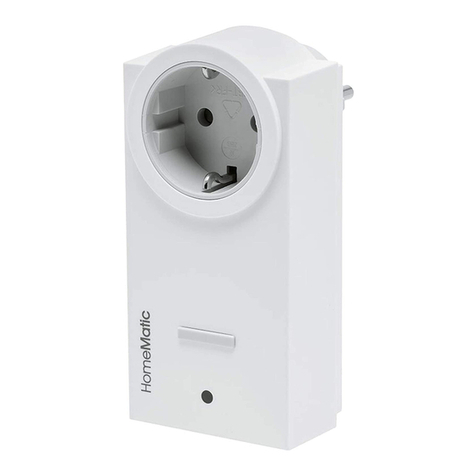
HomeMatic
HomeMatic HM-LC-Sw1-PI-DN-R1 operating manual
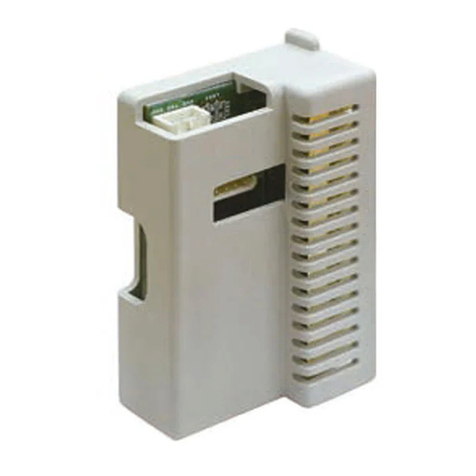
Samsung
Samsung MOS-C1 installation manual
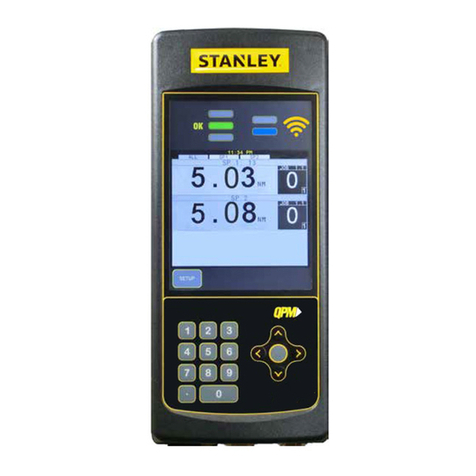
Stanley
Stanley QB Expert instruction manual
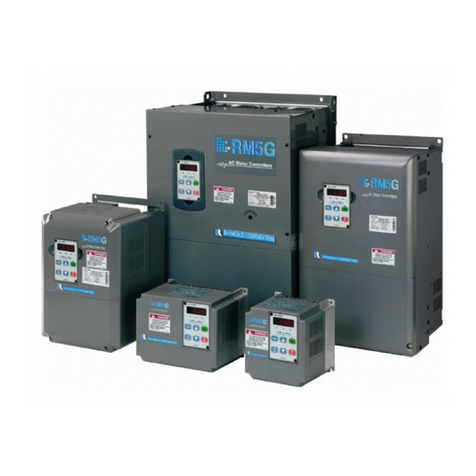
Rhymebus
Rhymebus RM5G manual
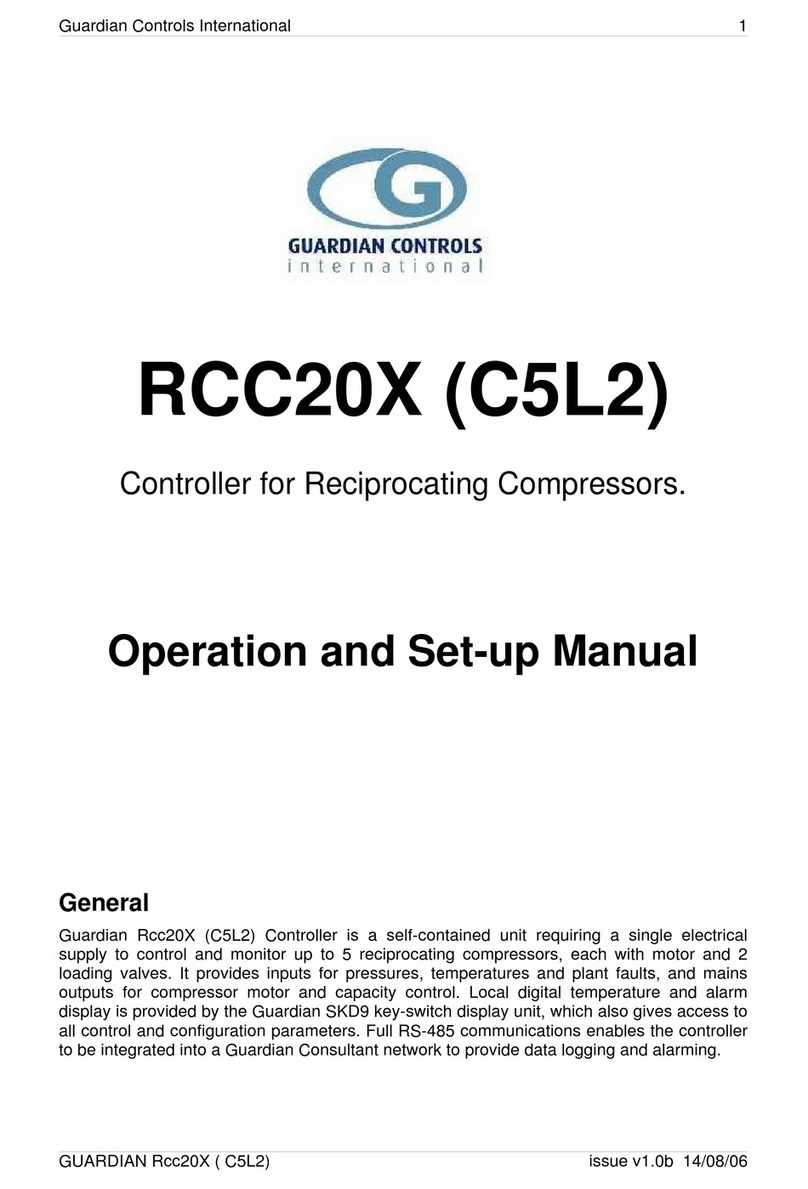
Guardian Controls International
Guardian Controls International RCC20 Series Operation and setup guide
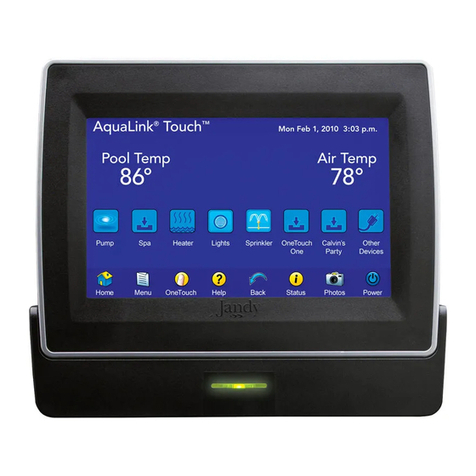
Jandy
Jandy AquaLink Touch Installation and operation manual

